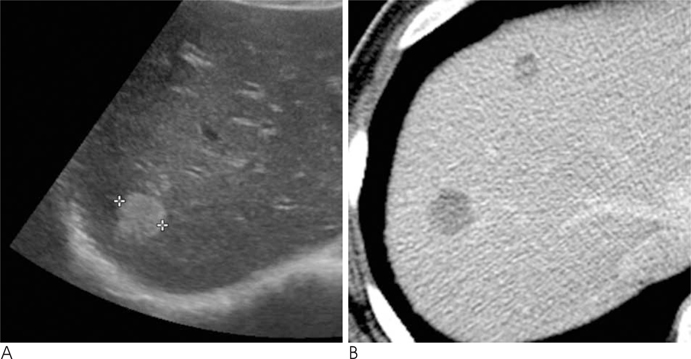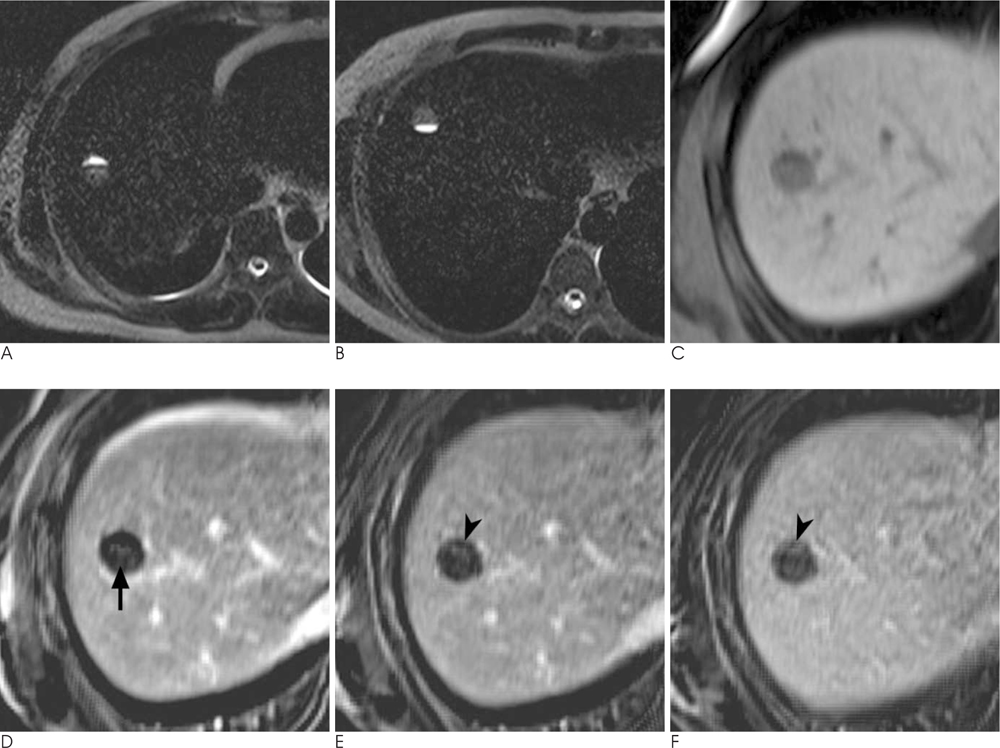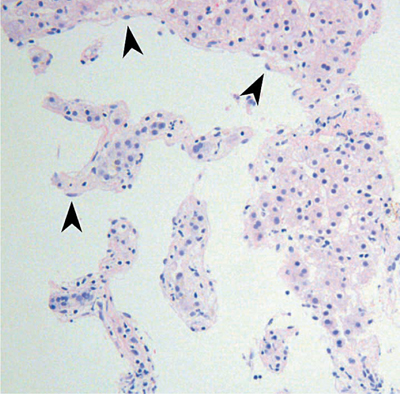J Korean Soc Radiol.
2011 Feb;64(2):173-177. 10.3348/jksr.2011.64.2.173.
A Case Report of Multiple Cavernous Hemangiomas with Fluid-Fluid Levels: A Focus on the Radiologic Features of Dynamic MRI with Subtraction
- Affiliations
-
- 1Department of Radiology, Chung-Ang University Hospital, Seoul, Korea. roentgen@cau.ac.kr
- 2Department of Radiology, Chung-Ang University, Yong-San Hospital, Seoul, Korea.
- KMID: 2097934
- DOI: http://doi.org/10.3348/jksr.2011.64.2.173
Abstract
- Multiple cavernous hemangiomas with fluid-fluid levels were presented in a 40-year-old male patient. These hemangiomas showed nonspecific radiologic features on ultrasound and computed tomography, but gadolinium-enhanced magnetic resonance imaging (MRI) with subtraction revealed fluid-fluid levels with unique and different enhancement of the inferior and superior layer. This is the first case report of cavernous hemangiomas with fluid-fluid levels, containing radiologic features of dynamic MRI with subtraction.
MeSH Terms
Figure
Reference
-
1. Vilgrain V, Boulos L, Vullierme MP, Denys A, Terris B, Menu Y. Imaging of atypical hemangiomas of the liver with pathologic correlation. Radiographics. 2000; 20:379–397.2. Itai Y, Ohtomo K, Kokubo T, Yamauchi T, Okada Y, Makita K. CT demonstration of fluid-fluid levels in nonenhancing hemangiomas of the liver. J Comput Assist Tomogr. 1987; 11:763–765.3. Soyer P, Bluemke DA, Fishman EK, Rymer R. Fluid-fluid levels within focal hepatic lesions: imaging appearance and etiology. Abdom Imaging. 1998; 23:161–165.4. Soyer P, Spelle L, Gouhiri MH, Rondeau Y, Pelage JP, Scherrer A, et al. Gadolinium chelate-enhanced subtraction spoiled gradient-recalled echo MR imaging of hepatic tumors. AJR Am J Roentgenol. 1999; 172:79–82.5. Ward J, Guthrie JA, Scott DJ, Atchley J, Wilson D, Davies MH, et al. Hepatocellular carcinoma in the cirrhotic liver: double-contrast MR imaging for diagnosis. Radiology. 2000; 216:154–162.6. Tung GA, Vaccaro JP, Cronan JJ, Rogg JM. Cavernous hemangioma of the liver: pathologic correlation with high-field MR imaging. AJR Am J Roentgenol. 1994; 162:1113–1117.7. Yamashita Y, Ogata I, Urata J, Takahashi M. Cavernous hemangioma of the liver: pathologic correlation with dynamic CT findings. Radiology. 1997; 203:121–125.8. Obata S, Matsunaga N, Hayashi K, Ohtsubo M, Morikawa T, Takahara O. Fluid-fluid levels in giant cavernous hemangioma of the liver: CT and MRI demonstration. Abdom Imaging. 1998; 23:600–602.9. Ghai S, Dill-Macky M, Wilson S, Haider M. Fluid-fluid levels in cavernous hemangiomas of the liver: baffled? AJR Am J Roentgenol. 2005; 184:3 Suppl. S82–S85.10. Lee J, Lim HK, Jeon YH. Multiple hepatic hemangiomas with fluid-fluid levels. Australas Radiol. 2007; 51:Suppl. B310–B312.
- Full Text Links
- Actions
-
Cited
- CITED
-
- Close
- Share
- Similar articles
-
- Multiple Cavernous Hemangiomas of the Posterior Mediastinum, Lung, and Liver: A Case Report
- A Case of Spontaneous Intracranial Hypotension: Detection of Cerebrospinal Fluid Leakage by Early Dynamic Radionuclide Cisternography
- Hemodynamics on Three-Phase Dynamic CT and Ultrasonographic Echogenicity of Small Hepatic Cavernous Hemangioma
- Calcified Cavernous Hemangioma of the Ovary: A Case Report
- Subcutaneous Cavernous and Capillary Hemangiomas of the Breast: Radiologic-Pathological Correlation




